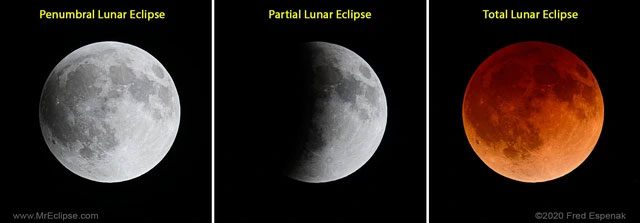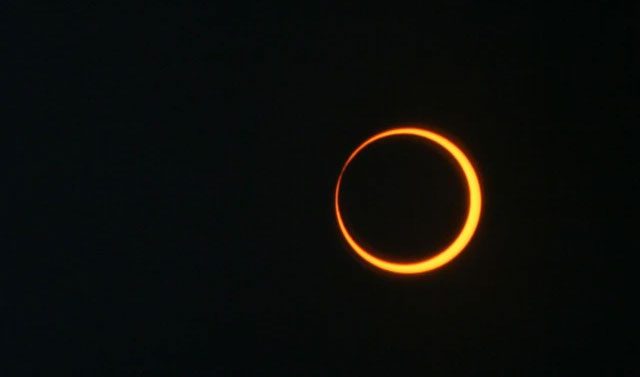The next event will be a penumbral lunar eclipse – the Moon will be crossed by a “shadow” – at the end of March.
According to Date and Time, four instances of the Moon and Sun “transforming” will occur in March, April, September, and October this year.
1. March Penumbral Lunar Eclipse
Depending on the time zone, this event will take place on March 24 or 25. Unlike a total lunar eclipse – also known as a blood moon – the Moon during a penumbral lunar eclipse only passes through the Earth’s penumbral shadow.

From left to right: Penumbral lunar eclipse, partial lunar eclipse, and total lunar eclipse (blood moon) – (Photo: NASA)
As a result, instead of turning completely red, you will only see a faint, ghostly shadow gradually gliding across the Moon, enveloping it for a time before disappearing.
Areas where this phenomenon can be observed include the Americas, the Pacific region, the Atlantic, the Arctic, the Antarctic, most of Europe, parts of North and East Asia, most of Oceania, and much of Africa.
2. Total Solar Eclipse on April 8
The central path of the solar eclipse – where you can see the ring – will sweep diagonally across Central America from the Southwest, crossing the United States and part of Eastern Canada.

The central path (in red) of the total solar eclipse on April 8 and the annular solar eclipse on October 2.
Regions that will at least see the partial eclipse include Western Europe, some other parts of North America, Northern South America, the Pacific, the Atlantic, and the Arctic.
3. Partial Lunar Eclipse on September 17 or 18
This will not be a beautiful blood moon, but only a small segment of the Moon will be engulfed in darkness during this lunar eclipse.
However, the areas where this phenomenon can be observed are quite broad, including Europe, most of Asia, Africa, the Americas, the Pacific, the Atlantic, the Indian Ocean, the Antarctic, and the Arctic.
4. Annular Solar Eclipse on October 2
The central path of this solar eclipse mainly traverses the ocean, only briefly touching the southernmost part of the South American continent.
Therefore, regions that will at least observe the partial eclipse include Southern North America, South America, the Pacific, the Atlantic, and the Antarctic.

An annular solar eclipse – (Photo: NASA).
Vietnam will not be able to observe any of the four lunar and solar transformations in 2024. You will have to wait until September 8, 2025. That will be a beautiful, full blood moon night.
In the meantime, to witness a solar eclipse, you will have to wait until 2027, with a partial eclipse occurring on August 2, 2027.




















































